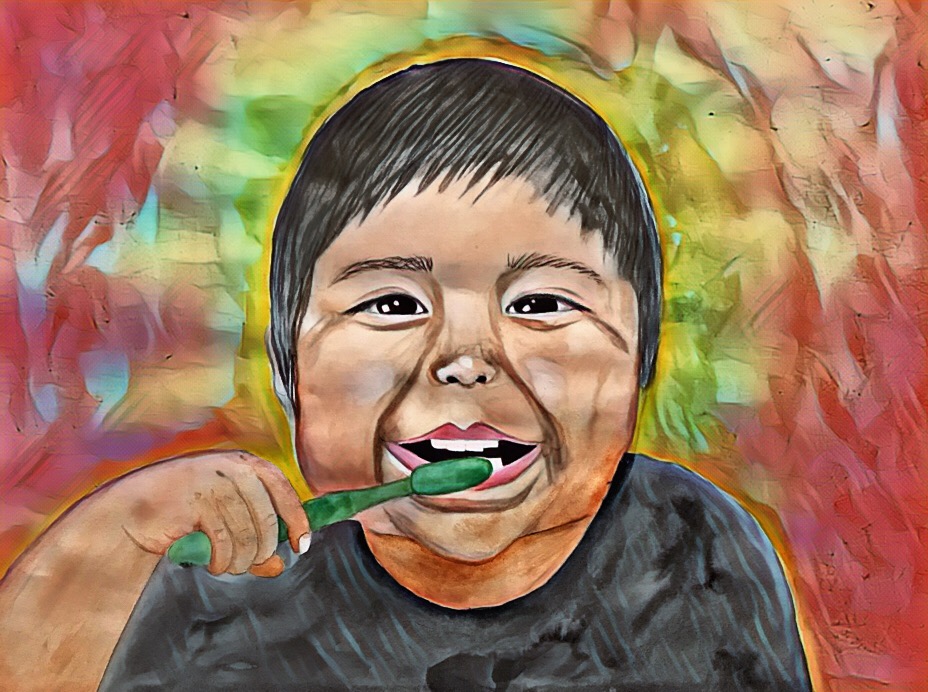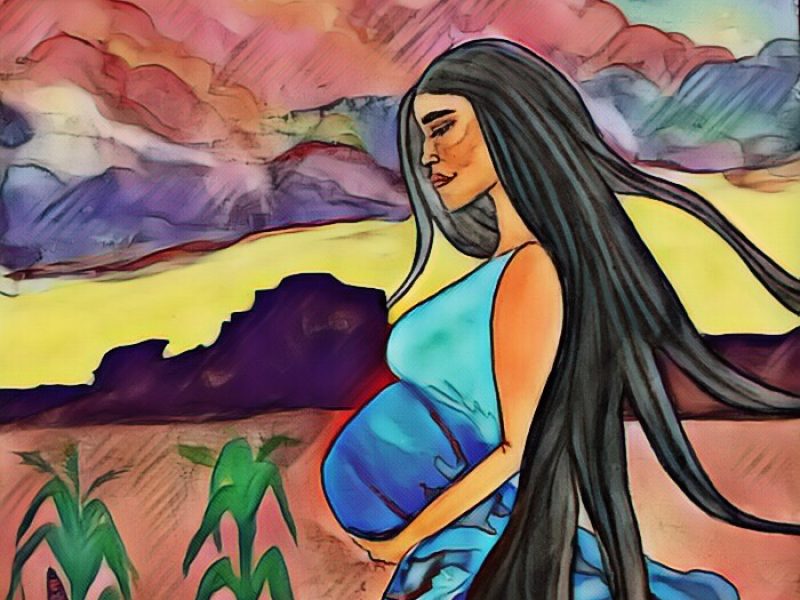Welcome, Baby, Smile! NAU professor uses art to bridge Native healthcare gaps
Investigation, initiative, and innovation
Early childhood caries (ECC), defined as one or more decayed, missing, or filled teeth in a child under the age of six, can affect children of all populations and backgrounds. However, the National Institute of Dental and Craniofacial Research (NIDCR) has highlighted a concerning trend: ECC are four times more prevalent among American Indian children than among white children. This alarming statistic underscores the urgent need to address this disparity. Left untreated, childhood cavities can lead to infection, chronic pain, tooth loss, dental disease, poor nutrition, impaired growth, and compromised general health, exacerbating existing inequities in healthcare for American Indians.
Based on their findings, NIDCR funded the Great Beginnings for Healthy Native Smiles initiative which aimed to address this oral healthcare inequity by understanding social, cultural, environmental, and structural factors associated with ECC.
The initiative, led by principal investigator Julie Baldwin, assembled a research team comprised of key tribal healthcare providers, cultural experts, NAU faculty and staff, a community advisory board, and internationally recognized researchers involved with ECC within Native populations. Two tribal groups were considered during this initiative: Hopi and Crow.

An illustration of a Hopi child brushing their teeth by Bre Taylor.
NAU researchers and faculty
Julie Baldwin, PhD
- Principal Investigator
- Regents’ Professor, Department of Health Sciences
- Executive Director, Center for Health Equity Research
- NARBHA Vice President for NAU Health
Steven Barger, PhD – Professor, Department of Psychological Sciences
Skyler Bordeaux, MPH – Research Coordinator, Center for Health Equity Research
Carolyn Camplain, PhD, JD – Assistant Professor, Lehigh University
Kristan Elwell, PhD – Assistant Clinical Professor, Department of Health Sciences
Christine Kirby, MA – Research Coordinator Sr., Center for Health Equity Research
Katharine Sanderson, MA – Research Coordinator Sr., Center for Health Equity Research
Heather Thomas, RDH, MEd – Associate Clinical Professor, Department of Dental Hygiene
Dawn Clifford, PhD, RD – Associate Professor, Department of Health Sciences
Marissa Tutt, MPH – Research Coordinator, Sr., Center for Health Equity Research
Researchers from The University of Colorado, Denver; University of New Mexico; The Hopi Tribe; Little Big Horn College; and Montana State University (MSU) were also key organizational partners throughout the project. Sara Young, MSU Director of Tribal Health and Tribal College Programs, gave community insight on Crow culture. Gerlinda Morrison, site principal investigator and coordinator on the Crow project, provided outreach support.
Focus groups and interviews were conducted with members of the Hopi and Crow community and healthcare providers to contribute culturally relevant perspectives on their oral healthcare experiences.
During the initiative, one team member and associate clinical professor in NAU’s Department of Dental Hygiene, Heather Thomas, RDH, MEd, had an idea.
Welcome, Baby, Smile!
Askwali/Kwakwha Tiposhoya pitu, Sayti’ii! (Hopi)
Baachilaxché Sapíwahkuu – Kaaiwaache! (Crow)

An illustrated cover for the book Welcome, Baby, Smile! with a Hopi baby by Bre Taylor.
Thomas and the team thought creatively about ways to bring a sustainable, meaningful, and culturally relevant resource for parents and children to learn about early childhood dental care. They landed on a six-inch-by-six-inch baby and toddler book for parents to take home and read with their children. There are children’s books that center on dental care, but there are very few created for and by Native peoples.
Native voices and artwork
The team found it necessary to seek Hopi and Crow insight continuously, so that the book reflected cultural norms and correct language usage. Involving Hopi and Crow people like Stephanie Hyeoma, a community health representative for the Hopi Department of Health and Human Services, enabled Thomas to record an audiobook version to reach more parents and children. Hyeoma said that she applied for the health educator position to make a difference.
Hopi artist Bré Taylor provided vibrant illustrations to reflect the Hopi people who are meant to read the book. The Crow version features Crow photos and visually engaging imagery. Many resources distributed by dentists and schools in Arizona are centered around white culture and miss key elements that are culturally relevant to Native peoples. Without these elements helping them connect culturally to the resources, they may not be as impactful.
“For me, I wanted Hopi women to get information on how important it is to take care of their teeth, especially during their pregnancy, and especially their children’s teeth”
Within the pages of the Hopi book

The Hopi book begins with welcoming baby earthside, with an illustration of a pregnant Hopi woman tending to her garden of corn.
As the pages turn, Illustrations dance across the seam paired with Hopi translations of the life of a Hopi child.
An introduction to oral health begins on a page nine, where simple, colorful images show how some of baby’s food turns into acid in their mouth and can then cause cavities if not properly cleaned.
A basic overview of key childhood dental hygiene is provided with vibrant illustrations to help solidify the suggestions. The book ends with the traditional practice throwing the first lost tooth toward the sun and praying for strength for the new tooth that will replace the lost – a cultural difference from the typical American tooth fairy tradition.
Why baby books?
Thomas has found through her research that interdisciplinary media and integrating health education into our everyday lives have stronger impacts than reports, pamphlets, or infographics. How people reeive educational information plays a role in retention and implementation, and these books provide an entertaining, accessible, and applicable resource for Hopi and Crow families.
Research reported here was supported by the National Institute of Dental and Craniofacial Research of the National Institutes of Health under Award Number U01DE028508. The content is solely the responsibility of the authors and does not necessarily represent the official views of the National Institutes of Health.
